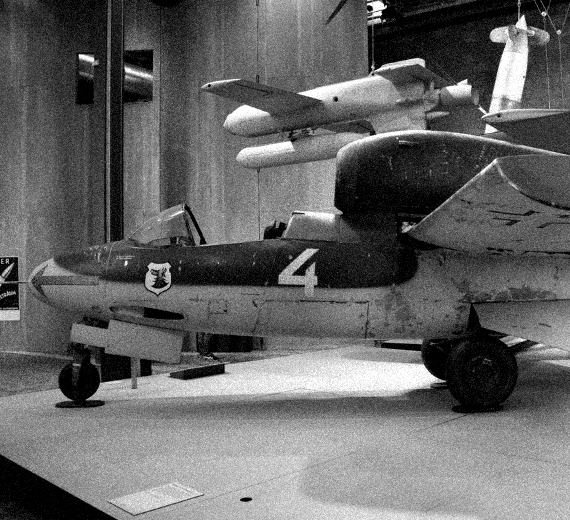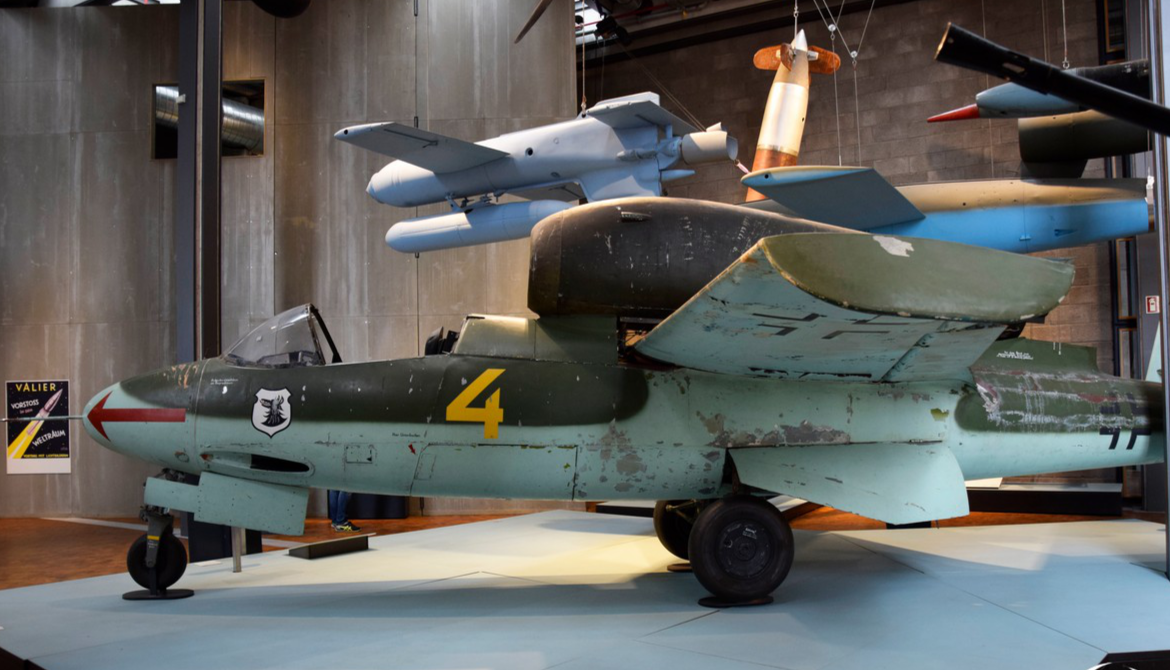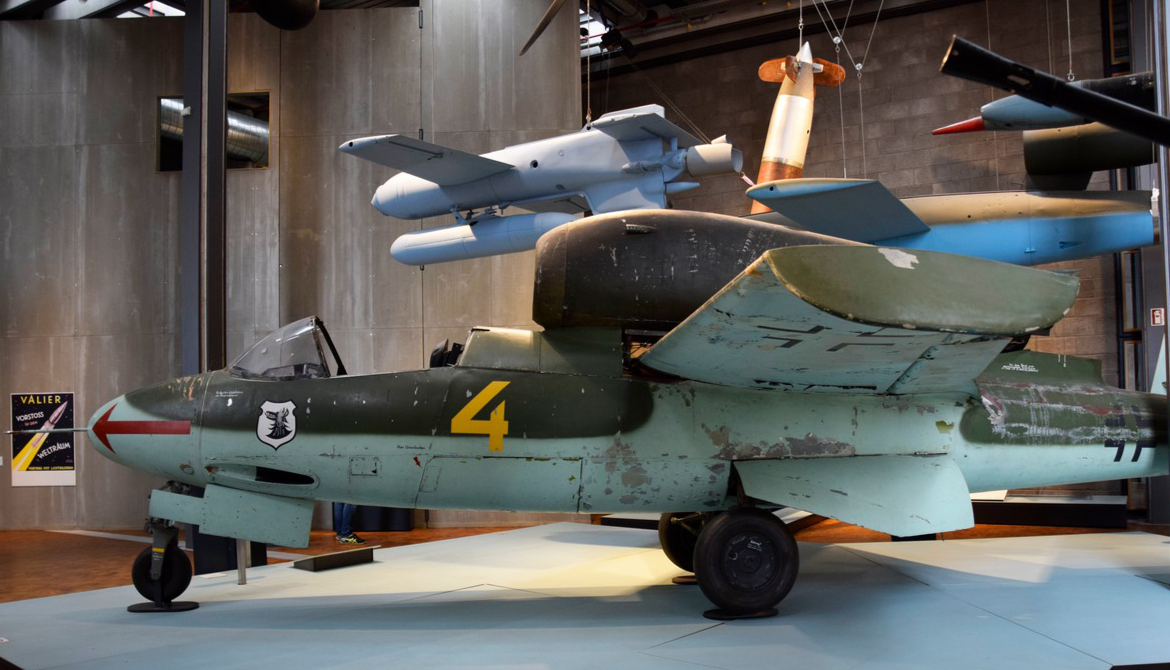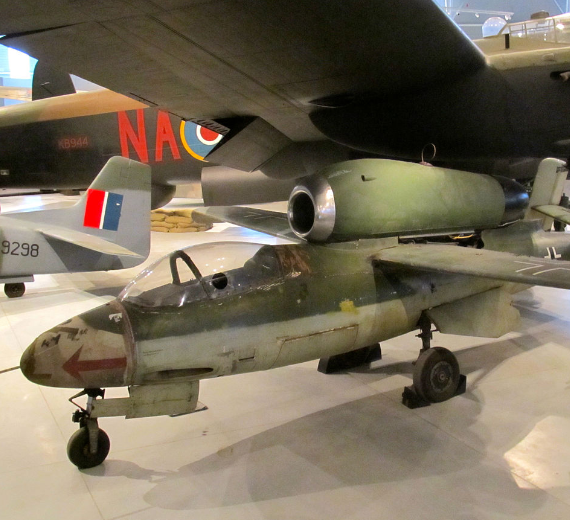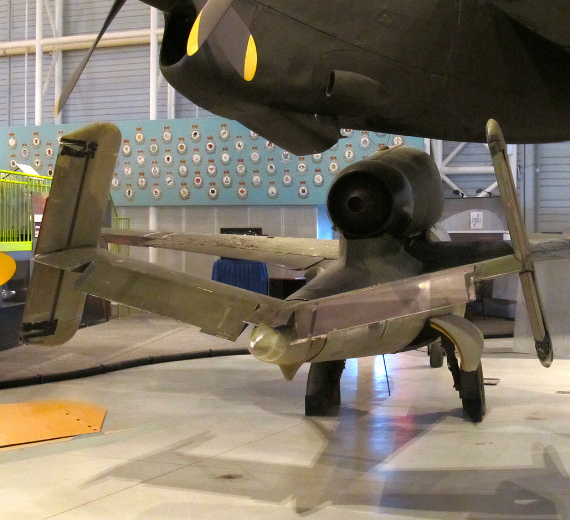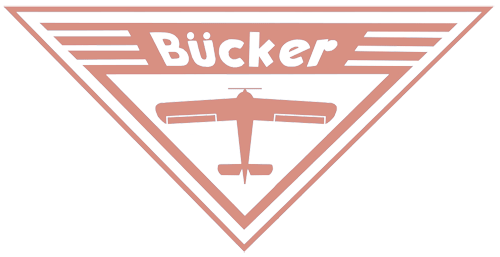Heinkel Flugzeugwerke Heinkel He-162 Jet
 |
|
| He 162A, WkNr. 120230, during post-war trials in the USA | |
| Role | Jet fighter |
|---|---|
| National origin | Germany |
| Manufacturer | Heinkel |
| First flight | 6 December 1944 |
| Introduction | January 1945 |
| Retired | May 1945 |
| Primary user | Luftwaffe |
| Produced | 1945 |
| Number built | About 320 |
.
History Heinkel Flugzeugwerke
Heinkel He 162 Volksjäger (German, "People's Fighter")

The Heinkel He 162 Volksjäger (German, "People's Fighter") was a German single-engine, jet-powered fighter aircraft fielded by the Luftwaffe late in World War II. Developed under the Emergency Fighter Program, it was designed and built quickly and made primarily of wood as metals were in very short supply and prioritised for other aircraft. Volksjäger was the Reich Air Ministry's official name for the government design program competition won by the He 162 design. Other names given to the plane include Salamander, which was the codename of its wing-construction program, and Spatz ("Sparrow"), which was the name given to the plane by the Heinkel aviation firm
The aircraft was notable for its small size; although almost the same length as a Messerschmitt Bf 109, its wingspan was much shorter at 7.2 metres (24 ft) vs. 9.9 metres (32 ft) for the Bf 109. Most distinctive was its top-mounted engine, which combined with the aircraft's low landing gear allowed the engine to be easily accessed for maintenance. This made bailing out of the aircraft without hitting the engine difficult, and the He 162 was the first single-engine aircraft provided with an ejection seat in an operational setting
Engines
Into flight
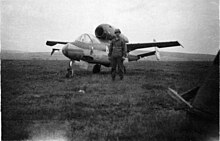
Origins

0
KmCeiling
0
KmMax RANGE
0
Km/hAircraft Speed
0
Max Crew
Photo Gallery
Heinkel Flugzeugwerke
Heinkel He 162 Volksjäger (German, "People's Fighter")


Heinkel Flugzeugwerke
Heinkel He 178 was an experimental aircraft
General Info
-
-
-
- Crew: 1
- Length: 9.05 m (29 ft 8 in)
- Wingspan: 7.2 m (23 ft 7 in)
- Height: 2.6 m (8 ft 6 in)
- Wing area: 11.16 m2 (120.1 sq ft)
-
-
Powerplant
-
-
- Empty weight: 1,660 kg )
- Max takeoff weight: 2,800 kg
- Fuel capacity: 695 L
- Powerplant: 1 × BMW 109-003E-1 or BMW 109-003E-2 turbojet engine,
-
-
-
General Info 3
- Maximum speed: 840 km/h (520 mph, 450 kn) at 6,000 m (20,000 ft)
- Range: 975 km (606 mi, 526 nmi)
- Service ceiling: 12,000 m (39,000 ft)
- Rate of climb: 23.42 m/s (4,610 ft/min)
Armament
-
- Guns: 2 × 20 mm (0.787 in) MG 151/20 autocannon with 120 rpg (He 162 A-2) or 2 × 30 mm (1.181 in) MK 108 cannon with 50 rpg (He 162 A-0, A-1)
-
-
.
Links to Youtube & Others
he Heinkel He 178 became the first practical turbojet-powered aircraft to fly when it took to the air on August 27th, 1939
Heinkel Flugzeugwerke
Heinkel He-162
Despite the seemingly ground-breaking attributes, the He 178 was more or less a conventional aircraft save for its powerplant.
Youtube Link
Despite the seemingly ground-breaking attributes, the He 178 was more or less a conventional aircraft save for its powerplant.
